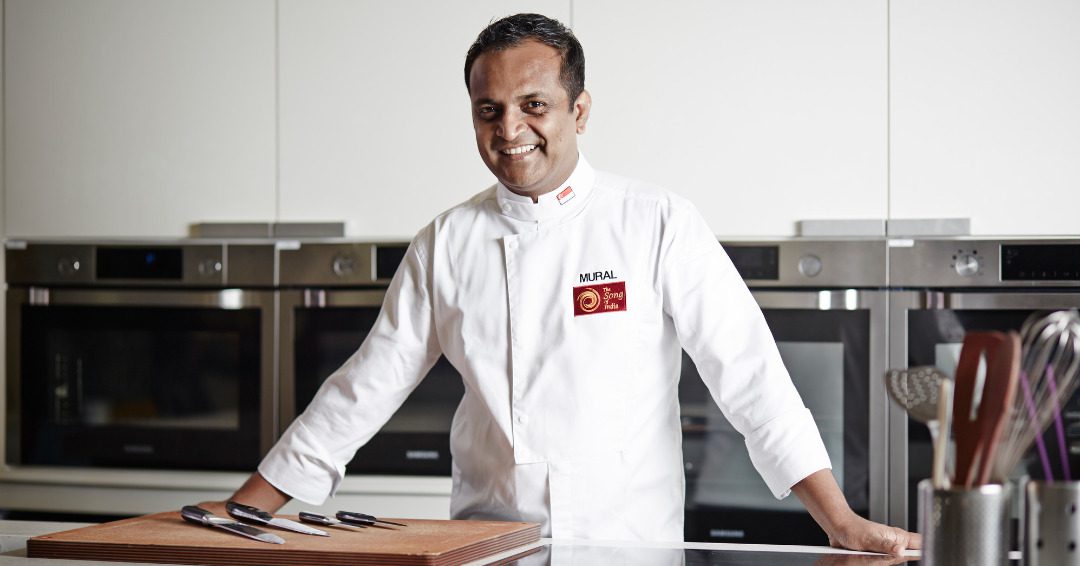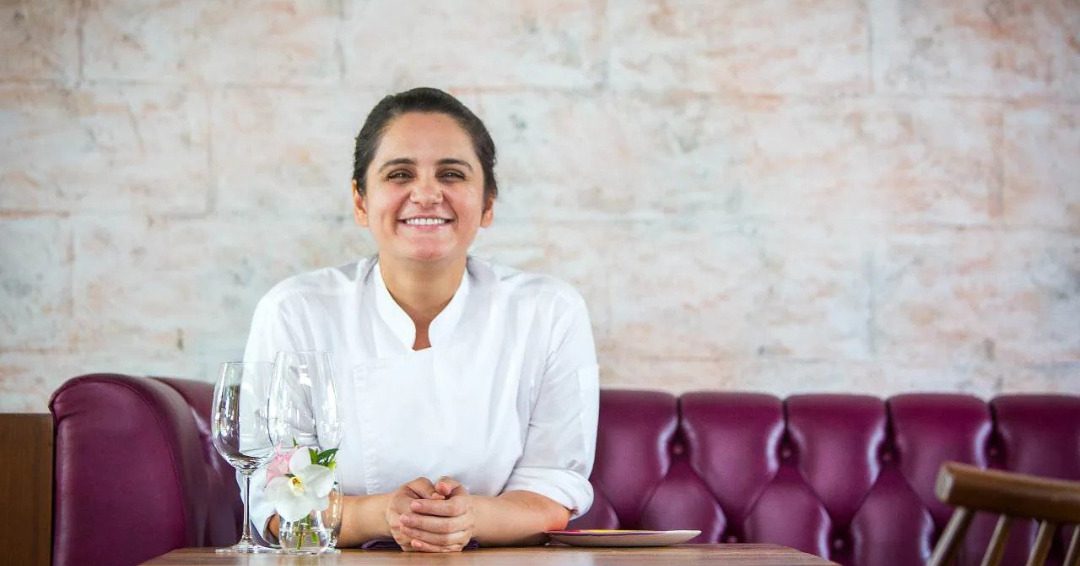(October 14, 2021) Who could have thought that an unassuming middle-class boy from Mumbai who came to Singapore a decade ago would score a Michelin star for an Indian restaurant in South East Asia not just once but thrice? Meet Manjunath Mural, the man behind the Asian-Indian gastronomy style that has satiated the palates of thousands of people in the last one decade. The 48-year-old plays with flavors, colors and ingredients like no one else, and is on a quest to make Indian cuisine as popular as French cuisine.
In the last few years, Mural has become a name to reckon with in the world of food. But it took him many years of hard work to hone his craft and reach the zenith. From someone who had no inclination of becoming a chef to winning three Michelin star for The Song of India, Mural has come a long way.
Accidental chef
Born in a family of doctors in 1973, Mural was raised in Mumbai. Being surrounded by medical professionals in family for most part of his early life, everyone expected Mural to follow the league. However, he had a different plan. No, it wasn’t to become a chef. Instead, he was keen on becoming a room service manager. His mother supported his decision to try something different and so he enrolled himself into a hotel management course at IHM Bangalore in 1993. But fate had already rolled its dice and as a part of industrial training in the third year, he was send to a Thai kitchen at the Taj President for three months. This was a turning point in Mural’s life who discovered his passion for cooking and there was no looking back for him. “It was during my training at the Taj President where, while training in the Thai restaurant, I met two Thai lady chefs who really inspired me with the feeling that being a chef is a respectful career which requires a great deal of passion,” he told Career Ahead in an interview.
View this post on Instagram
The experience at the hotel put the seeds of hope in his fertile mind that he could become a world-class chef. So he returned to his college for his final year and put himself to test at the chef competition and bagged himself a second position. This was yet another turning point for Mural as it allowed him to compete on the national level. While Mural had his eyes on toque blanche, he had to fight the prejudices to take a leap of faith. “In those days, the chef profession was looked down upon. People said, ‘Yeh bawarchi banega?’ It was my mother who supported me unconditionally and persuaded my father to give in. She said, ‘Follow your dream,’ he told Hindustan Times.
Mural relentlessly worked to make it happen but his mother passed away due to cancer. This untimely loss of the only person who believed in him led him to promise himself that he wouldn’t stop until he did her proud.
Chasing his dream
This cemented his belief in himself and in order to chase his dream of becoming a chef, he joined The Resort, a five-star hotel in Madh Island. Working in the kitchen, he learnt the trick of the trade and was soon selected as a management trainee in kitchen at Centaur Hotel in Mumbai. It was here that Mural got to work with renowned master chef Sanjeev Kapoor and Milind Sovani. Under their guidance, he enhanced his skills as a chef. Such was his progress that he was soon appointed as chef de partie (a chef in charge of a particular area in a restaurant) and continued to specialize in Indian cuisine. His passionate work in the kitchen translated into ample opportunities and one such led him to Taj President where he trained under the famed chef Ananda Solomon. Mural was hopping from one restaurant to another and this made him restless despite his progress. At this time he was looking to work with an international chain but all his effort was in vain.
View this post on Instagram
After trying his luck at many places, he got his first big break at the Renaissance Powai. “I was surprised that the head chef, a foreigner, selected me as junior sous chef. For me, that was a dream come true, to be working in a global hotel chain where I could learn so much more. It was here that I gained tremendous confidence. Soon, a new ambition started forming in my mind – to get a job abroad,” he added.
Mumbai to Singapore
He feverishly started to apply to kitchens in London, Dubai and the United States. But to his dismay only junior positions were open. However, he kept himself afloat and the right opportunity knocked on his door in the form of his former mentor Milind Sovani with whom he worked briefly at the Juhu Centaur. Sovani offered him a job at The Song of India restaurant that he founded in 2006 in Singapore. Mural jumped at the opportunity and moved to the Garden City. Upon his arrival, he realized he had no idea about international palate. For months he struggled to control his hand as spicy was the only way he knew Indian food. That’s when chef Sovani stepped in and made him understand his vision. Two years later, Sovani moved to India giving the reins of his restaurant in Mural’s hands, who became the restaurant’s executive chef.
View this post on Instagram
Over the years, Mural developed an Asian-Indian gastronomy style, wherein he played with ingredients, flavors, colors and presentation to cook up a plate that was rich in palate. In between he won a gold medal in gourmet hunt Singapore 2007 for The Song of India and participated in a reality TV show on cooking. He even earned a nomination as Best Asian Chef of the Year in 2012 and participated in World Gourmet Summit 2013.
A Michelin star that made him a star
But it was in 2016 that this Global Indian‘s biggest moment came. Ten years after he set foot in Singapore, he won the restaurant its first Michelin star, the first for an Indian restaurant in South East Asia. The next year too, he renewed the honor. In 2018, he led The Song of India to score a hat trick as the restaurant was awarded a Michelin star for the third consecutive year in a row. “For a chef, being awarded a Michelin star is like winning the Academy Award,” he told India Today.
View this post on Instagram
After serving as Song of India’s culinary director for 14 years, Mural bid adieu to the long association as he opened his own restaurant in Singapore called Adda in 2020. Mural is keen to put Indian cuisine on the global map like no one else. “My personal goal is to share the rich heritage and diversity of Indian cuisine, and hopefully one day, people will regard it as highly as they do French cuisine,” he said.
Follow Manjunath Mural on Instagram



